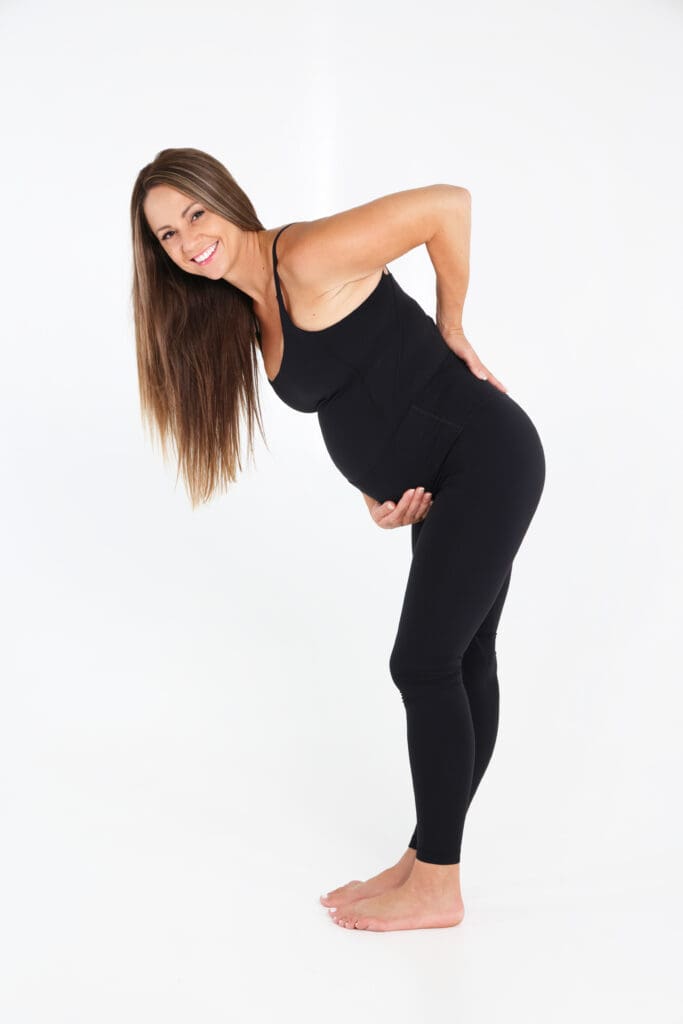Easing Prenatal Back Pain:
Effective Yoga Poses for Expecting Mothers | Natalie Devisse

Pregnancy is a beautiful journey, but it often comes with its share of physical discomforts, especially back pain. As your body adapts to support your growing baby, the added weight and shifting posture can put a strain on your back. Fortunately, prenatal yoga offers gentle and effective poses to alleviate back pain and promote overall well-being. Here, are some of the best yoga poses to ease prenatal back pain and help you enjoy a more comfortable pregnancy.
Effective Yoga Poses for Prenatal Back Pain
- Cat-Cow Stretch (Marjaryasana-Bitilasana):
- Benefits: Improves spinal flexibility, alleviates back pain, and releases tension.
- How to: Start on your hands and knees, with wrists aligned under shoulders and knees under hips. Inhale, arch your back (cow pose), lifting your head and tailbone. Exhale, round your back (cat pose), tucking your chin and pelvis. Repeat for several breaths.
- Child’s Pose (Balasana):
- Benefits: Stretches the lower back, hips, and thighs; promotes relaxation.
- How to: Kneel on the mat, big toes touching and knees wide. Sit back on your heels, extend your arms forward, and rest your forehead on the mat. Breathe deeply and relax.
- Bound Angle Pose (Baddha Konasana):
- Benefits: Opens the hips and groin, which can relieve lower back pain.
- How to: Sit with soles of the feet together and knees out to the sides. Hold your feet or ankles, lengthen your spine, and gently press your knees towards the floor. Breathe deeply and relax.
- Standing Forward Bend (Uttanasana):
- Benefits: Stretches the hamstrings, calves, and back; relieves tension.
- How to: Stand with feet hip-width apart (or wider to make room for your baby). Inhale, lengthen your spine, and exhale, fold forward from the hips. Let your head hang and keep a slight bend in your knees. Hold for several breaths.
- Triangle Pose (Trikonasana):
- Benefits: Stretches the back, hips, and legs; improves balance.
- How to: Stand with feet wide apart. Turn your right foot out and your left foot slightly in. Extend your arms out to the sides. Reach forward with your right hand and lower it to your shin or a block, while your left arm extends upward. Gaze at your left hand. Hold for several breaths and switch sides.
Tips for Safe Practice
- Modify Poses as Needed: As your pregnancy progresses, modify poses to accommodate your changing body. Use props like blocks, straps, and bolsters for support.
- Focus on Breath: Practice deep, steady breathing to enhance relaxation and oxygen flow.
- Avoid Overstretching: Be mindful not to overstretch, as pregnancy hormones can make your ligaments more flexible.
- Stay Hydrated: Drink plenty of water before, during, and after your yoga practice.
- Listen to Your Body: If something doesn’t feel right or causes discomfort, stop immediately and modify the pose or skip it altogether.
Conclusion
Prenatal yoga is a wonderful way to manage back pain and maintain overall well-being during pregnancy. By incorporating these gentle poses into your routine, you can alleviate discomfort, improve flexibility, and promote relaxation. Remember to listen to your body, move at your own pace, and consult with your healthcare provider before starting any new exercise routine. Embrace this beautiful journey with the support of prenatal yoga, and enjoy a more comfortable and joyful pregnancy.
About the Author
Natalie Devisse is a certified prenatal yoga teacher with over 10 years of experience. Passionate about mind and body exercises, Natalie has helped countless expecting mothers navigate their pregnancy journeys with confidence and ease. When she’s not teaching yoga, Natalie enjoys exploring motherhood, traveling, and spending time with her family.
Disclaimer
The information provided in this blog post is for educational and informational purposes only and is not intended as medical advice. Always consult with your healthcare provider before beginning any new exercise program, especially during pregnancy. Every pregnancy is unique, and what works for one person may not be suitable for another. Listen to your body and discontinue any exercise that causes discomfort or pain.

